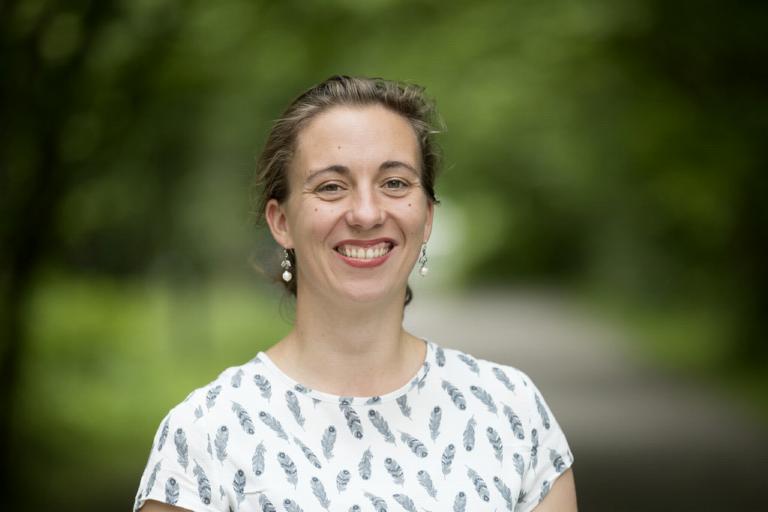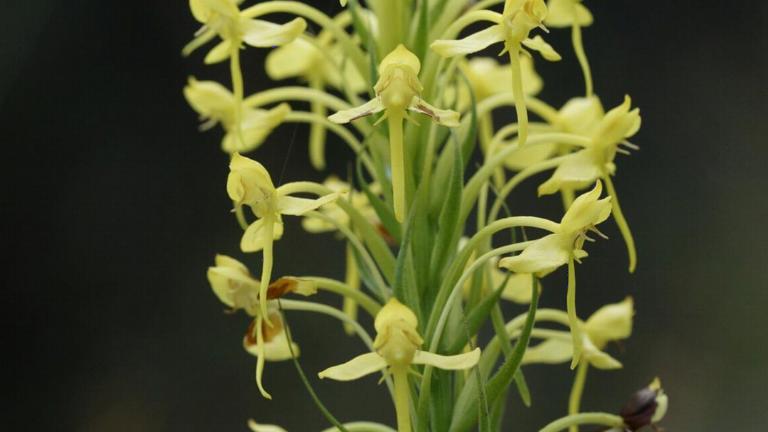
Ik ben een etnobioloog met interesse in medicinale planten en eetbare orchideeën. Samen met mijn medewerkers werk ik aan de identificatie en conservering van medicinale planten uit Kenia en Tanzania en eetbare orchideeën uit Tanzania en Zambia. Met behulp van kwantitatieve marktonderzoeken en DNA-barcodes probeer ik te bepalen welke soorten lokaal worden verhandeld en in welke bedragen om uiteindelijk natuurbeschermings problemen op te lossen die voortkomen uit de handel van in het wild geoogste nuttige planten.
Keywords
Africa, conservation, historical ethnobotany, non-timber forest products, wildlife trade
Researchinterest
Ik breng de oogst en handel in geneeskrachtige planten en eetbare orchideeën in kaart, en onderzoek met behulp van moleculaire technieken welke soorten op lokale markten worden verhandeld om zo plannen voor het beheer van natuurlijke hulpbronnen te helpen ontwikkelen.
Niet uit hout bestaande bosproducten kunnen een waardevolle bron van inkomsten zijn voor plattelandsgemeenschappen, vooral in ontwikkelingslanden. Commerciële handel is echter een van de grotere bedreigingen voor in het wild geoogste plantenpopulaties. Om een duurzame aanvoer te garanderen, is het nodig om te bepalen welke soorten gevaar lopen op overexploitatie. De identificatie van in het wild geoogste bosproducten, kan een uitdaging zijn, aangezien deze producten vaak worden verhandeld als poeders, wortels, schors, bundels bladeren of knollen, en deze plantenorganen zijn allemaal erg moeilijk te identificeren. DNA-barcodering en Next Generation Sequencing maken identificatie tot op soortniveau mogelijk.


Currenttopics
Monitoring and quantifying the trade in non-timber forest products to see which species are traded and or extracted in great quantities, is a first step in developing a system of controlled sustainable exploitation. Priority species for conservation would be those that are frequently available at market stalls and those that are reported to be increasingly difficult to obtain in the wild. Some of the favored species are cultivated, weedy or otherwise abundant, but others are wild-collected from threatened biodiversity hotspots. These will be the species that need further attention in conservation plans.
Exploring Tanzanian medicinal markets
We performed quantitative market surveys on the main medicinal plant markets of Dar-es-Salaam and Tanga. During interviews market vendors were asked where the medicinal plants are harvested from and what plants became more difficult to obtain from the wild. We used DNA barcoding to identify over 850 medicinal plant samples from the markets and found that at least 175 plant species were traded. Some of the most frequently used medicinal plants are also those reported to become more difficult to obtain, indicating unsustainable harvesting. Together with local stakeholders we would like to raise awareness for medicinal plant conservation and explore cultivation possibilities.
Investigating Zambian edible orchid trade
Chikanda is a traditional Zambian cake consisting of ground orchid tubers and peanuts. Over the past decade the demand for chikanda in Zambia has grown dramatically such that there now exists a thriving commercial market. Orchid tubers became depleted in Zambia are now imported from surrounding countries such as Tanzania, Angola, Malawi and the DRC. Initially only certain Disa, Habenaria and Satyrium species were used for chikanda, but more and more indiscriminate harvest seems to be taking place. We interviewed harvesters and vendors in Tanzania and Zambia to determine where the orchids are harvested and in which amounts. To determine which orchid species are used for chikanda, we identified orchid tubers using DNA barcoding and analysed ready-made chikanda cake using high-throughput sequencing. We estimate that there are 50 species within eight orchid genera used for chikanda cake and as many as 4 million individual tubers are exported from Tanzania to Zambia every year. In collaboration with local stakeholders we are establishing cultivation programmes and we are raising awareness about chikanda orchid conservation through local NGO’s.
Comparative analysis of Maasai plant trade
People from the Maasai ethnic group are well-known to have extensive knowledge of medicinal plants. It appears however, that there are intracultural differences in medicinal plant trade among the Maasai in Tanzania and Kenya. In this project we compare medicinal plants traded by Maasai vendors in Tanzania and those Kenya and try to determine what intercultural differences there are as well as potential causes.
Keypublications
- Veldman S., Kim S.J., van Andel T.R., Font M.B., Bone R.E., Bytebier B., Chuba D., Gravendeel B., Martos F., Mpatwa G. Ngugi G., Vinya R., Wightman N., Yokoya K., de Boer H.J. 2018. Trade in Zambian edible orchids - DNA barcoding reveals the use of unexpected orchid taxa for Chikanda. Genes 9: 595.
- Veldman, S., Gravendeel, B., Otieno, J.N., Lammers, Y., Duijm, E., Nieman, A., van Andel, T., de Boer, H. 2017. High-throughput sequencing of African orchid cake highlights conservation challenges in orchids. Biodiversity and Conservation 26: 2029-2046.
- Veldman, S., Otieno J., van Andel, T., Gravendeel, B. and de Boer, H. 2014. Efforts urged to tackle thriving illegal orchid trade in Tanzania and Zambia for chikanda production. TRAFFIC Bulletin 26(2): 47-50.
- Veldman, S., Otieno, J., Gravendeel, B., van Andel, T., and de Boer, H. 2014. Conservation of Endangered Wild Harvested Medicinal Plants: Use of DNA Barcoding. In: A. Gurib-Fakim (ed.), Novel Plant Bioresources: Applications in Food, Medicine and Cosmetics, pp. 81-88. John Wiley & Sons, Oxford, UK.